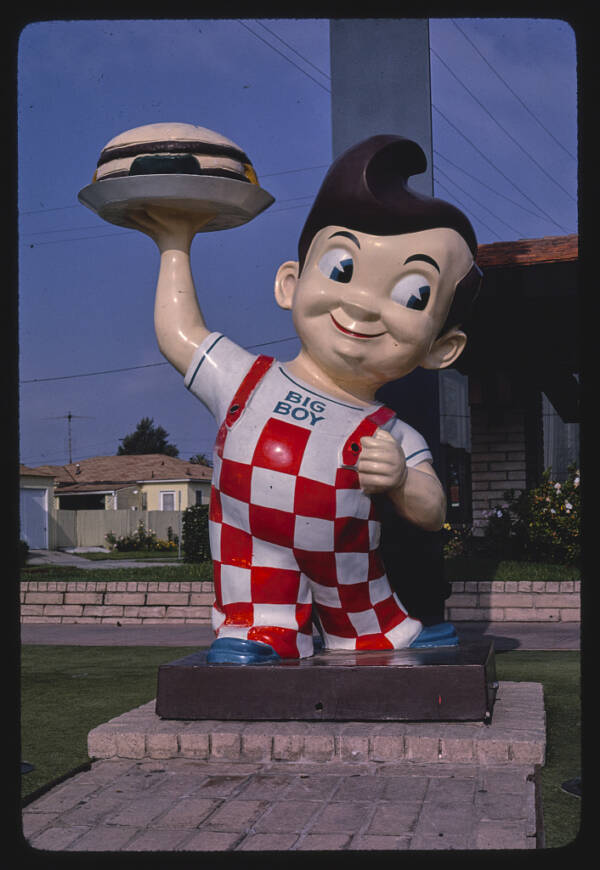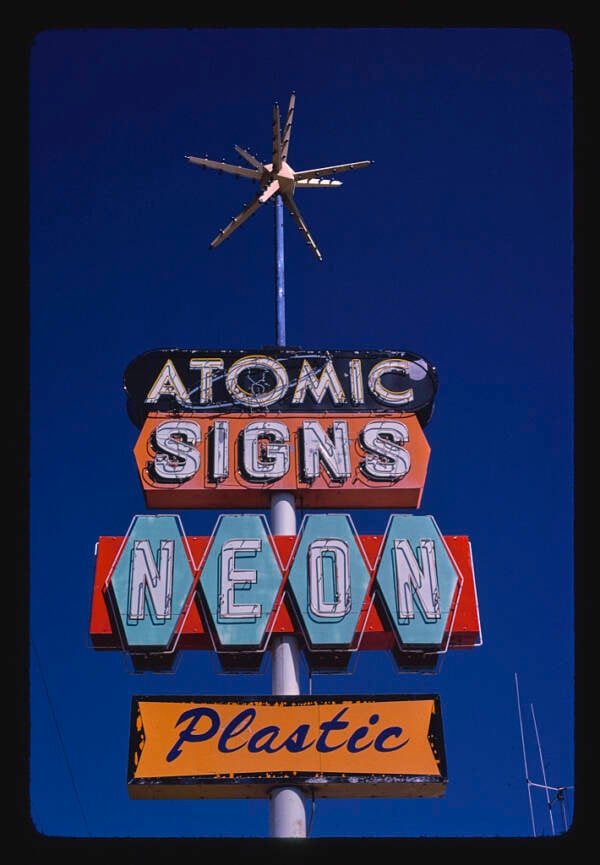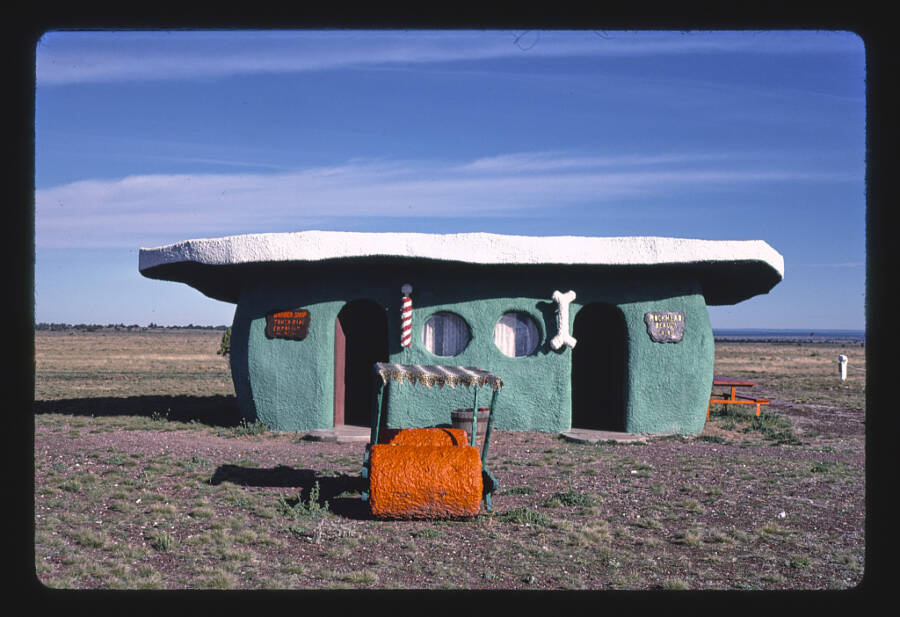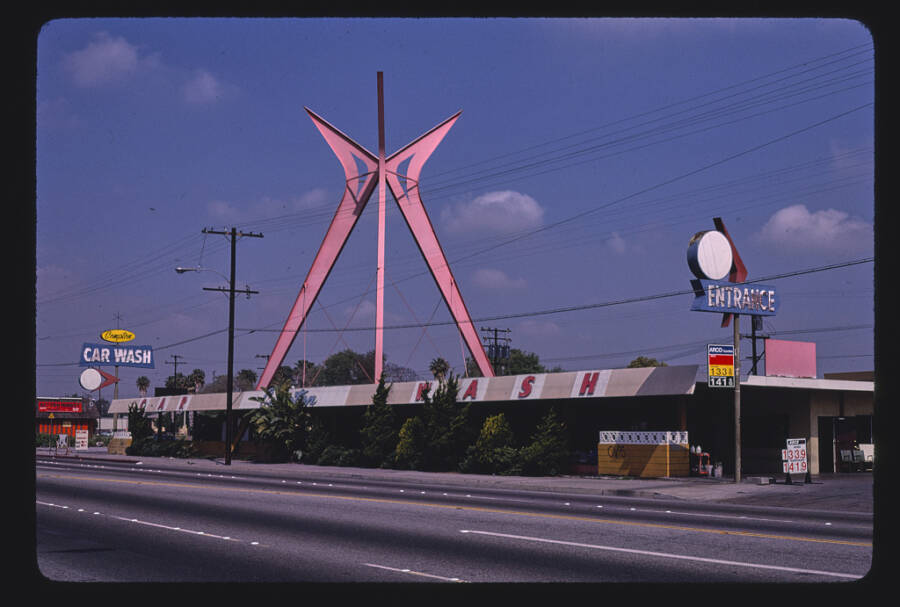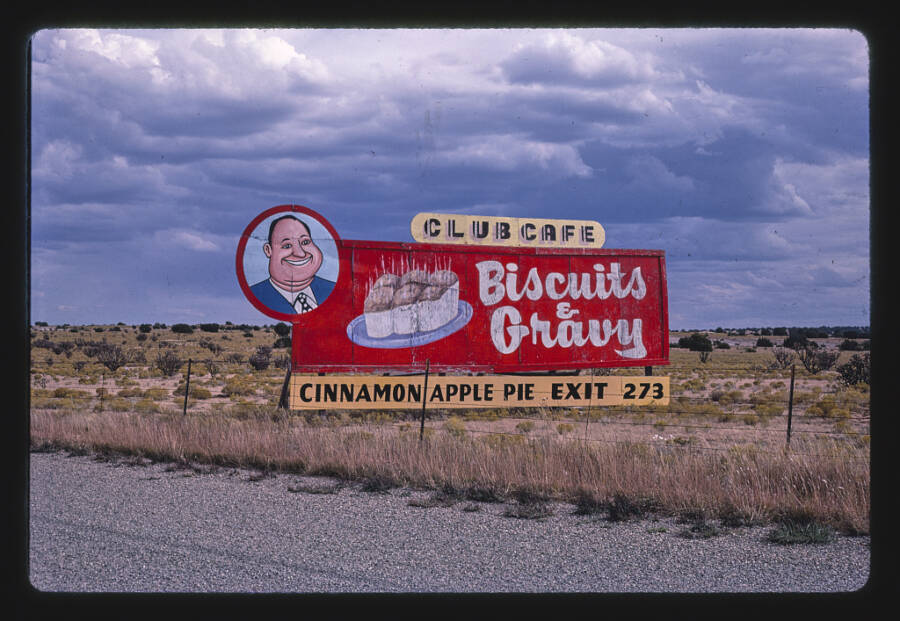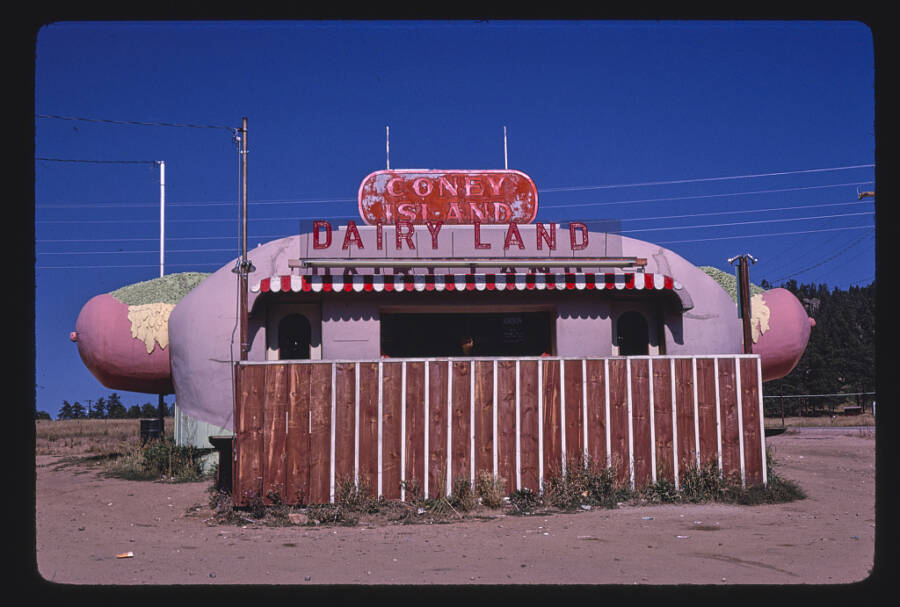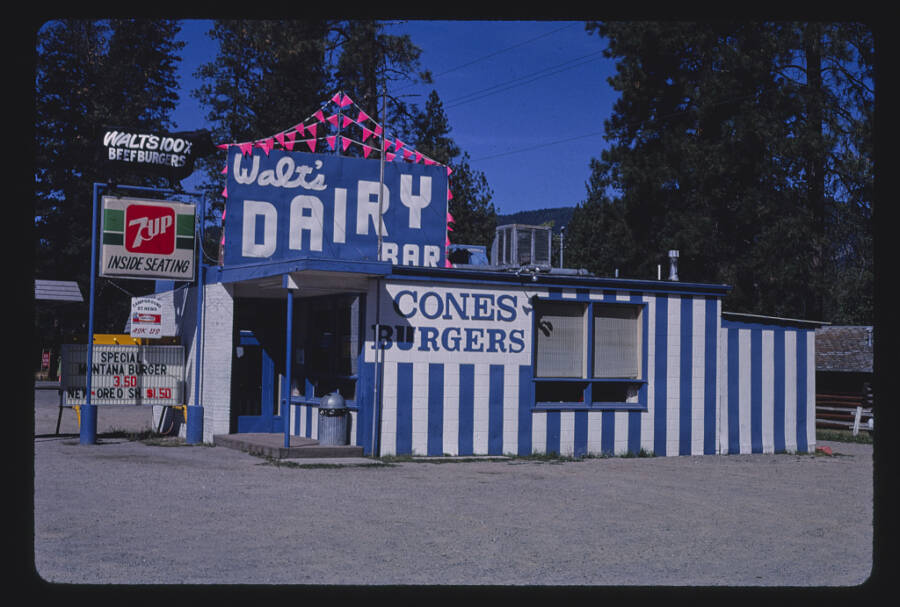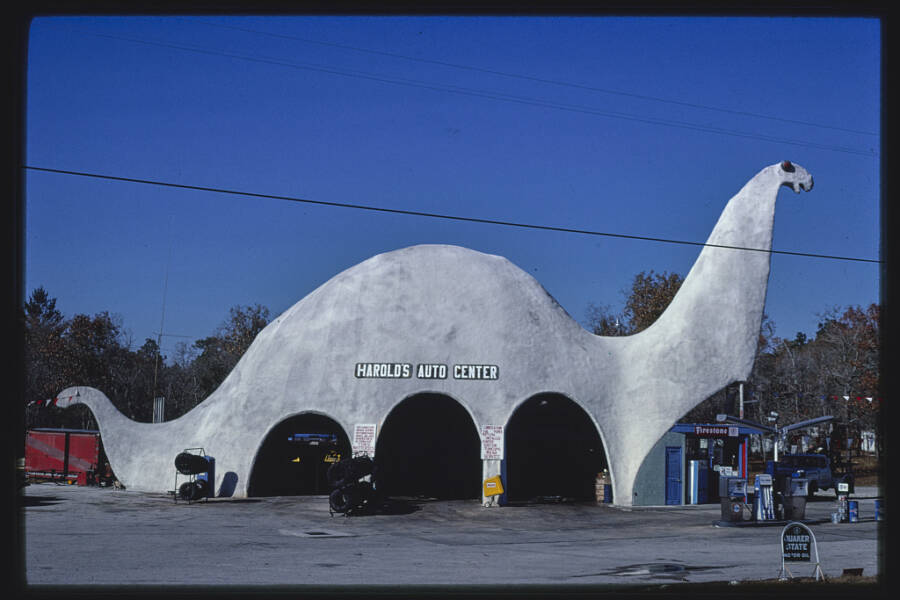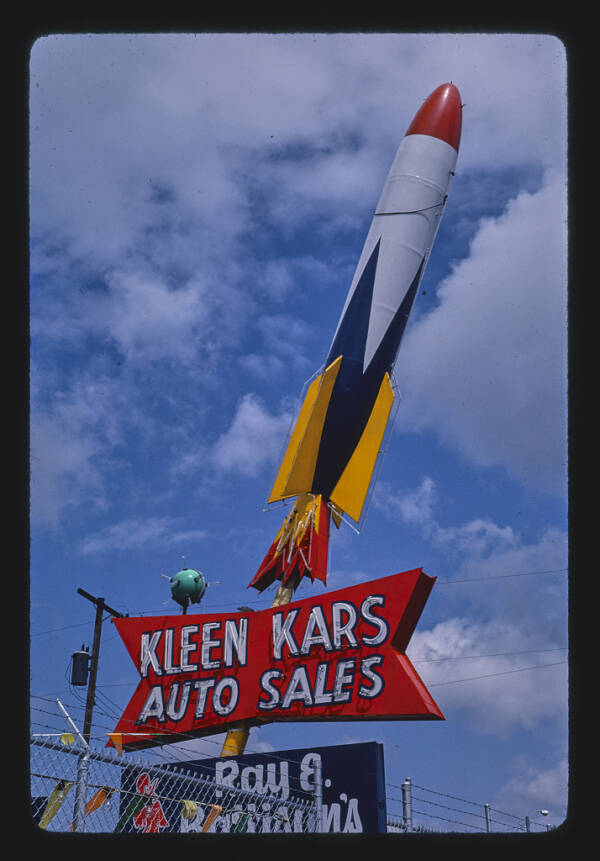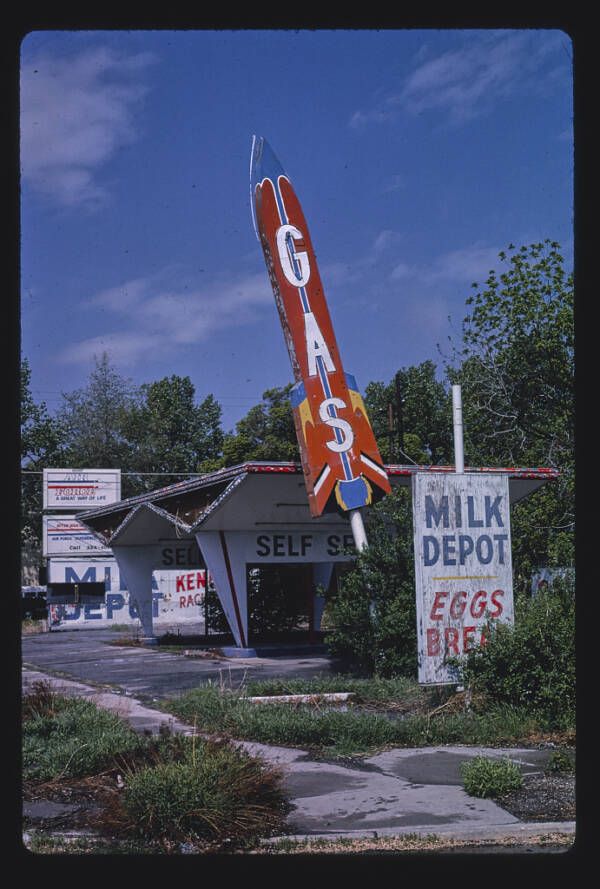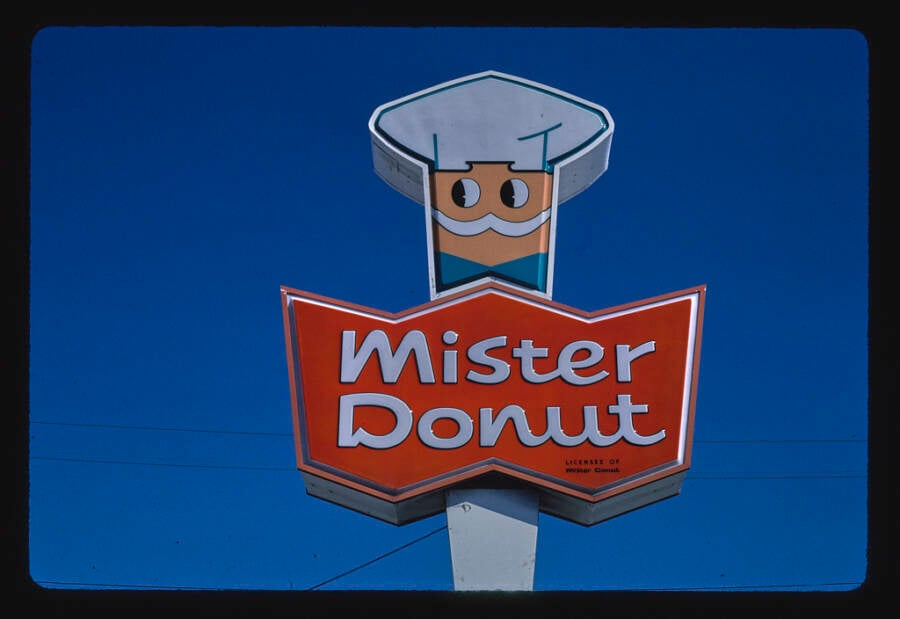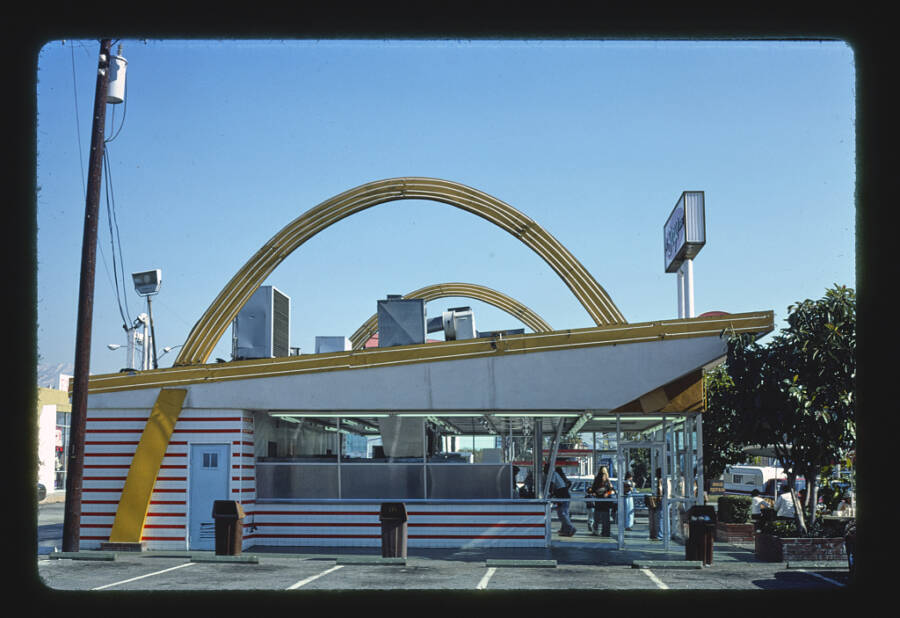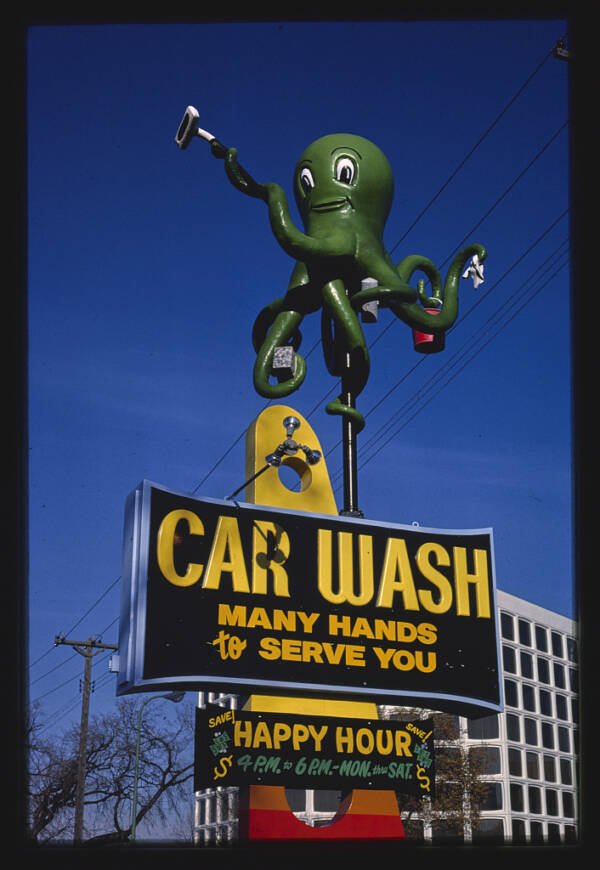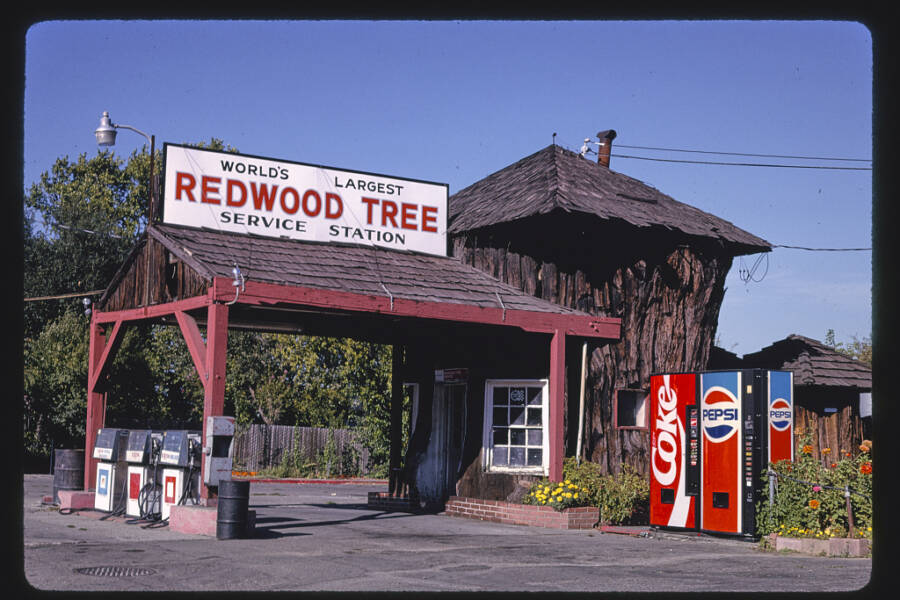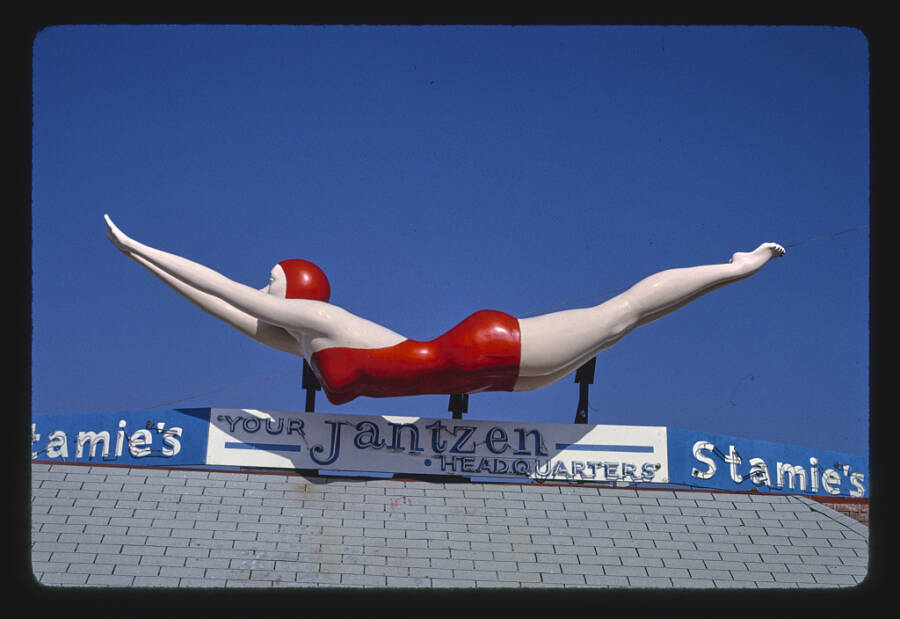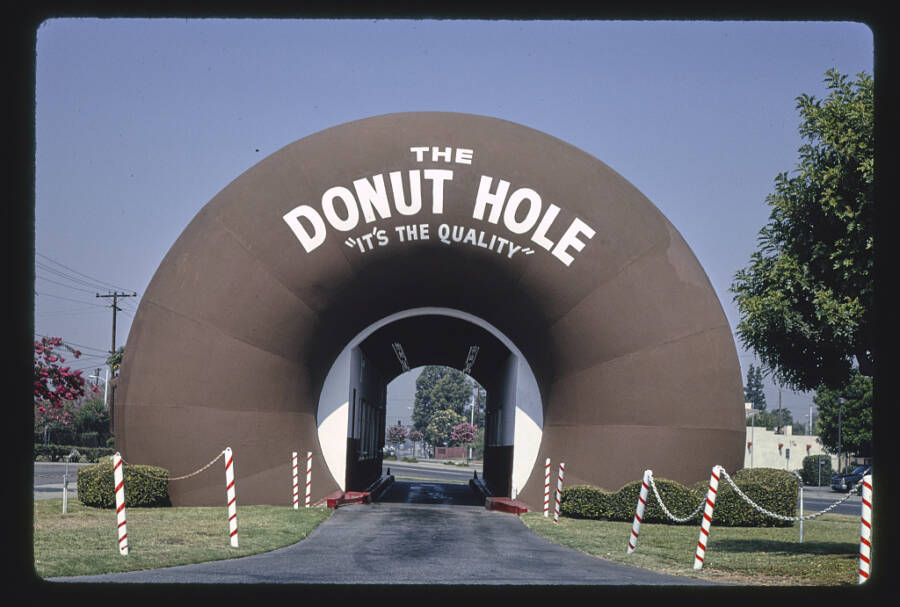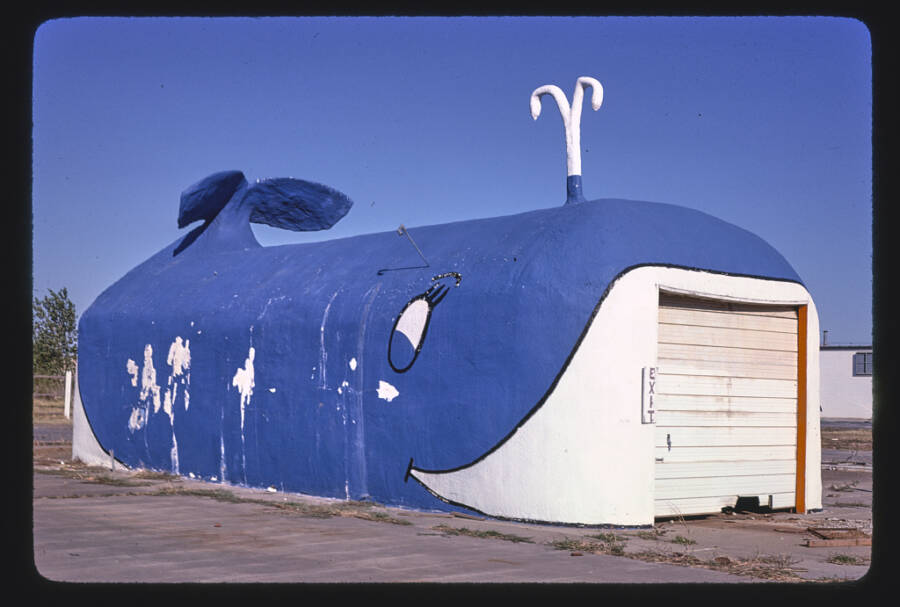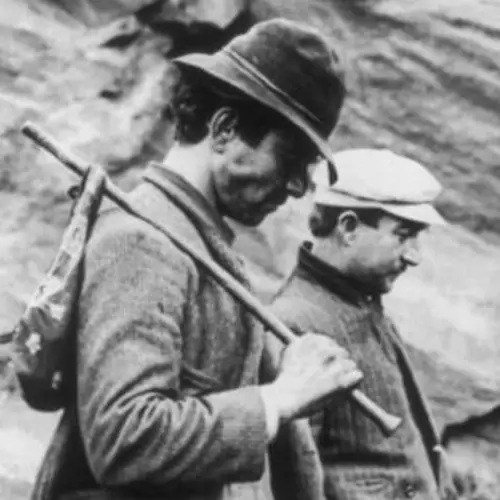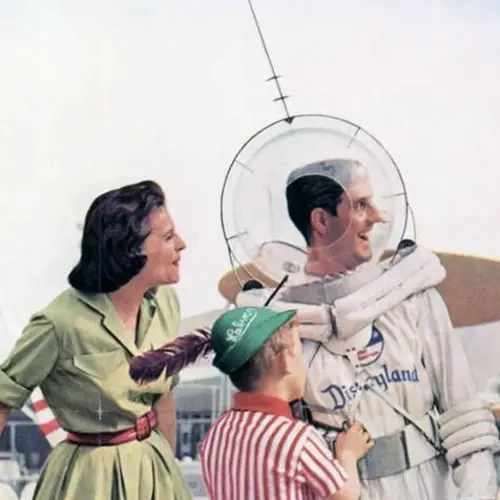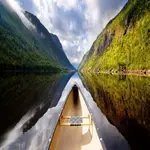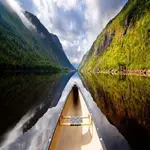Photographer John Margolies spent more than 30 years on the road documenting America's big, bold, and bizarre roadside attractions.
The unique way John Margolies captured the vibrancy and designs of America's classic roadside attractions will make you long for simpler times. His photographs celebrate the kitschy beauty of novelty locations from a giant pink dinosaur to a Boeing B-17G parked on a gas station.
When he first began his decades-long road trip across the states in the early 1970s, Margolies started documenting these structures and signs out of fear they'd soon disappear, and be replaced with modern, less-quirky counterparts.
He wasn't wrong. Not long after many of these photos were taken, the cutting-edge replaced the corny, and granite replaced gimmicks. Thousands of sun-baked, yet colorfully painted mom and pop shops, themed gas-stations, and motels met their end in the name of "progress." Fortunately, however, Margolies managed to memorialize many of them in his massive body of work.
A Photographic Road Trip Across America


Library of Congress/FlickrStinker Cut-Rate Gas sign, Boise, Idaho. 1980.
What happens when your parents refuse to stop at any fun attractions on childhood road trips? You grow up to become a nostalgia documentarian and architectural critic, whose muse is novelty roadside stops.
This drove Margolies to take a 30-year tour of America in rented Cadillacs. He captured America at its most colorful — diners, drive-ins, dairy bars, and all.
More than 100,000 miles traveled saw Margolies create a colossal 11,710 color-saturated slides.
At each stop, he made sure the attraction was the undisputed star of the photograph, always shooting when there were no people, no inclement weather, and no distractions. "I spend an awful lot of time in crummy motels waiting for the sun," Margolies told The Washington Post. "Sometimes I just have to give up and go on down the road."
Margolies also took great care to specify the year, state, and city — sometimes even down to the street — where each of his photos was taken. This was more than just snapping photos. This was documenting a fleeting time in history.
"Sometimes it begins to feel like just too much to keep up with," he once said. "But then I think to myself, 'Hey, you could be stuck in a real job,' and then I hit the road again."
But among the many roadside attractions Margolies turned his camera on, California's beloved Madonna Inn holds a special place.
The Madonna Inn


Library of CongressThe Madonna Inn, San Luis Obispo, California, 1978.
Known as the world's kitschiest hotel, The Madonna Inn is polarizing in the world of building designers. However, Margolies wrote extensively about it for Progressive Architecture magazine in 1973, calling it "an extraordinary architectural monument, full of feeling and overflowing with layer upon layer of lavish detail."
The Madonna Inn represented everything Margolies looked for in a photographic subject. It's clear that he and the builders & owners, Alex and Phyllis Madonna, were of the same aesthetic mindset.
"The splendid and exuberant interiors in the public areas are rivaled and in some cases surpassed by the elaborate guest rooms ... the antithesis of the sterile, franchised reality of a Holiday Inn or a Hilton."
But in spite of the riotous color and unbridled optimism in his photos, Margolies was definitely not just having fun.
How John Margolies Photographed Roadside Attractions
According to his friends and colleagues, Margolies took his work very seriously.
"He never thought it was silly or kitsch," said Margaret Engel, executive director of the Alicia Patterson Foundation and a friend of Margolies'. "He really felt that this was an expression of creativity that had to be grasped at 50 mph going down the highway – so, of course, everything was oversized and brightly colored and neon."
Margolies also took the time to get things just right.
"He had a lot of quirks," said Jane Tai, Margolies' long-time companion. She commented that "he carried a broom in his car, and he would do a little clean-up so that there wasn't any extra debris in the frame."
He'd also "stop traffic and lie on his belly" to get the shot he wanted. He even paid people to move their cars if they were encroaching on his perfect shot.
Dozens of coffee-table books later, Margolies' work remains relevant as nostalgia reigns. But, he admitted, "I wasn't trying to make intellectual points. I wanted to go everywhere and see everything."
After his death from pneumonia in 2016, the Library of Congress assimilated Margolies's archives. They now reside in the public domain — where they promise to inspire others to make America weird again.
If you liked John Margolis' photos of vintage Americana, you'll love what old New York looked like before the skyscrapers moved in. Then check out these 55 vintage photos of your parents being cooler than you.
